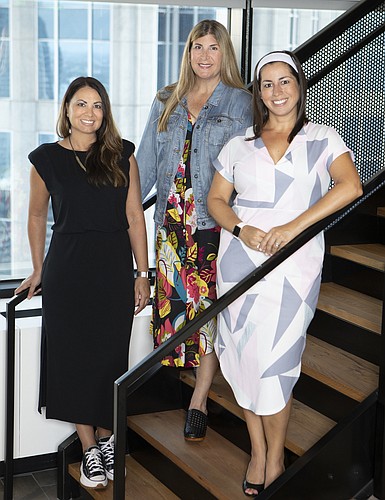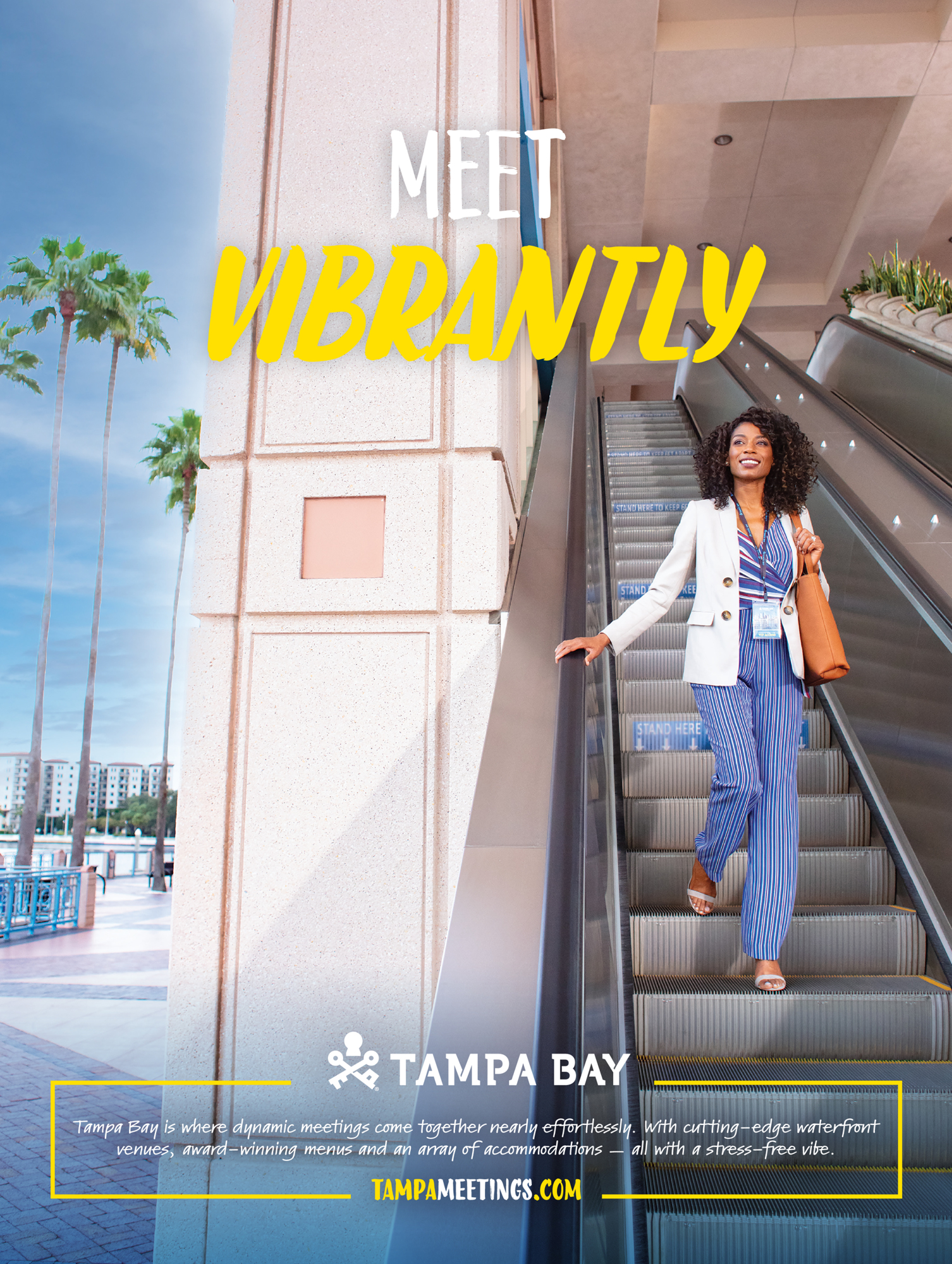- April 10, 2025
-
-
Loading

Loading

Let’s say you’ve been tasked to grow tourism in what’s already one of the hottest post-pandemic destinations in the county. How do you market it in a way that hasn’t been done before? How do you surprise potential visitors with information they don’t already know?
That was the brief given to Clearwater-based FKQ, one of the region’s most venerable marketing and advertising agencies, by longtime client Visit Tampa Bay, the destination marketing organization for Tampa and Hillsborough County.
“Because we’ve had so much success, year after year, with the client, they’ve empowered us to go out and raise the bar,” FKQ Group Creative Director Dana Cohen says. “It’s a great problem to have, but how do you beat yourself every year? We’re really focused on awareness as well as revenue, because we’re no longer so tightly tethered to Florida, and this new campaign is very much about Tampa Bay.”

That last point is critical, and it refers to one of the most intriguing findings from FKQ’s 2021 team-up with Downs & St. Germain Research, a Tallahassee-based tourism market research firm. Because five years, as well as a global pandemic, had passed since 2016, when FKQ landed the Visit Tampa Bay account, the firm wanted to better understand how well Tampa Bay’s brand and location reach its target audiences.
“We were recognizing that consumer behavior had changed, consumer sentiment had changed, but that overall awareness had been increasing,” FKQ Senior Account Director Elisa DeBernardo says. “It was time to recheck perceptions and attitudes about Tampa Bay with our travelers.”
The Downs & St. Germain Research quantitative study surveyed people who had and had not visited Tampa Bay. It found that 43% of respondents believe the Tampa Bay brand is strong enough to stand on its own, apart from Florida, and while slightly more — 49% — think Tampa Bay should still rely on Florida brand elements, the difference is nearly negligible and signaled to FKQ that it was time to take some risks.
Luckily, the client agreed.
“There are a lot of clients we’ve worked with who don’t want to be first because it involves taking a risk, but Visit Tampa Bay is willing to take that risk,” DeBernardo says. “And they’ve seen a lot of rewards from it.”
As FKQ staffers put together Visit Tampa Bay’s new campaign, dubbed the “Tampa Bay Effect,” they had to be disciplined financially. The budget for the campaign is $5 million, a far cry from the resources available to agencies that work with deep-pocketed Visit St. Pete/Clearwater across the bay. They also faced constraints imposed on them by the vagaries of local government, as DeBernardo explains.
“They have a lot more money,” she says, “and they can spend their budget in market. We cannot. We can’t target people in Tampa and Hillsborough County; we can only market outside, whereas they have more leeway to spend money.”
Cohen adds, “That’s why you won’t see Visit Tampa Bay ads at Tampa International Airport, but Visit St. Pete/Clearwater, they can buy those big, splashy elevator door ads.”
‘Because we’ve had so much success, year after year, with the client, they’ve empowered us to go out and raise the bar. It’s a great problem to have, but how do you beat yourself every year?’ FKQ Group Creative Director Dana Cohen says.
To stretch each dollar as much as possible, FKQ concentrated its efforts in a handful of markets, including usual suspects such as Boston, Chicago, New York, Philadelphia and Washington, D.C., as well as rapidly growing Sunbelt cities such as Dallas. And with the pandemic causing more people to travel by car instead of planes, the firm also devoted a lot of attention to what it calls “drive markets,” such as Atlanta. It also heavily marketed the Visit Tampa Bay message throughout Florida.
“Floridians love to vacation in Florida,” DeBernardo says.
FKQ’s research revealed some travel patterns that might seem counterintuitive at first glance. According to DeBernardo, it’s not uncommon for tourists to fly into Orlando International Airport and drive over to Tampa at some point during their stay. And as Tampa Bay’s national profile grows, even visitors to South Florida are getting in on the act.
“You’d be surprised how many people who make it to the Tampa Bay market are flying into, say, Fort Lauderdale and then driving up,” DeBernardo adds. “You would think you’d never do that.”
Another discovery found within the Downs & St. Germain Research study is somewhat paradoxical, revealing that nearly half, 49%, of visitors find Tampa Bay both active and relaxing. Other common descriptors included “adventurous,” “peaceful” and “something for everybody.” FKQ staff too these terms and ran with them as they developed slogans around which to build the new Visit Tampa Bay campaign.
“In almost every response, you could see people communicating this experience of Tampa,” DeBernardo says, “that it was very relaxing and also very adventurous and very active.”
She adds, “Not to disparage any other vacation here in Florida, but a lot of them might be very ‘single note,’ you know, ‘walk out the door and you’re on a beach.’ But here in Tampa, you have such a wide variety of activities to enjoy.”

The region’s versatility and appeal to a wide variety of visitors prompted FKQ to depart from the norms of destination branding in terms of the phrases and terms it used to establish the identity of Tampa Bay. As opposed to a vague, catch-all slogan, like Orlando’s “Unbelievably Real” tagline, FKQ emphasized the yin-and-yang dynamic at play in responses to the survey. And it came up with not one, but three, slogans: “Relax Boldly,” “Delight Effortlessly” and “Meet Vibrantly,” with the latter intended to appeal to business travelers and event planners. “Meet Brilliantly” is also being used in some cases.
If not for Downs & St. Germain Research’s deep dive, “I never would have come up with that sort of juxtaposition,” Cohen says. “Because at first blush, it feels like it might be conflicting — how can it be relaxing and vibrant at the same time? But then when you think about where our travelers are coming from, the congestion that they live in every day, the pace, the stress … even if you’re doing something adventurous here, maybe you’re paddleboarding, it’s still relaxing.”
Apart from the Visit Tampa Bay logo, the slogans don’t contain a place name, which could be seen as a risky move, but it fit with FKQ’s visual-first approach to the campaign.
“Our ads are always very image-driven,” Cohen says, “and very much about feeling immersed in the destination.”
She says a lot of travel and tourism marketing involves images of majestic shorelines, mountains, forests and other sweeping vistas. FKQ wanted to help Visit Tampa Bay stand out from the crowd with full-frame, tightly cropped action shots.
“We wanted to be short, bold and eye-catching,” Cohen adds. “We wanted these short headlines, with two words that represent the yin and the yang, so you have an active word with a more relaxed word.”
The short, snappy slogans have the added benefit of working well in digital media such as online banner ads you might see on websites and even streaming services.
“We’re on platforms like Hulu and contextual ads on the Internet, you’ll see us on paid social [media] and we are even on gas station TV, looking for that driver who is out and about,” Group Media Director Gina Kline says. “From a media perspective, it’s hard to find a new channel or a new way to use it, but what we like to work toward are big canvases that can let Visit Tampa Bay be a beautiful visual representation.”
In New York, for example, Visit Tampa Bay videos played on screens in the public square of the city’s iconic Hudson Yards neighborhood, and buses “wrapped” in Visit Tampa Bay ads rumbled up and down Big Apple streets and avenues.
“We look for innovative ways to bring something new a different,” Kline says, “and it’s a big challenge for us to stand out against the other DMOs and messaging out there you need to break through.”